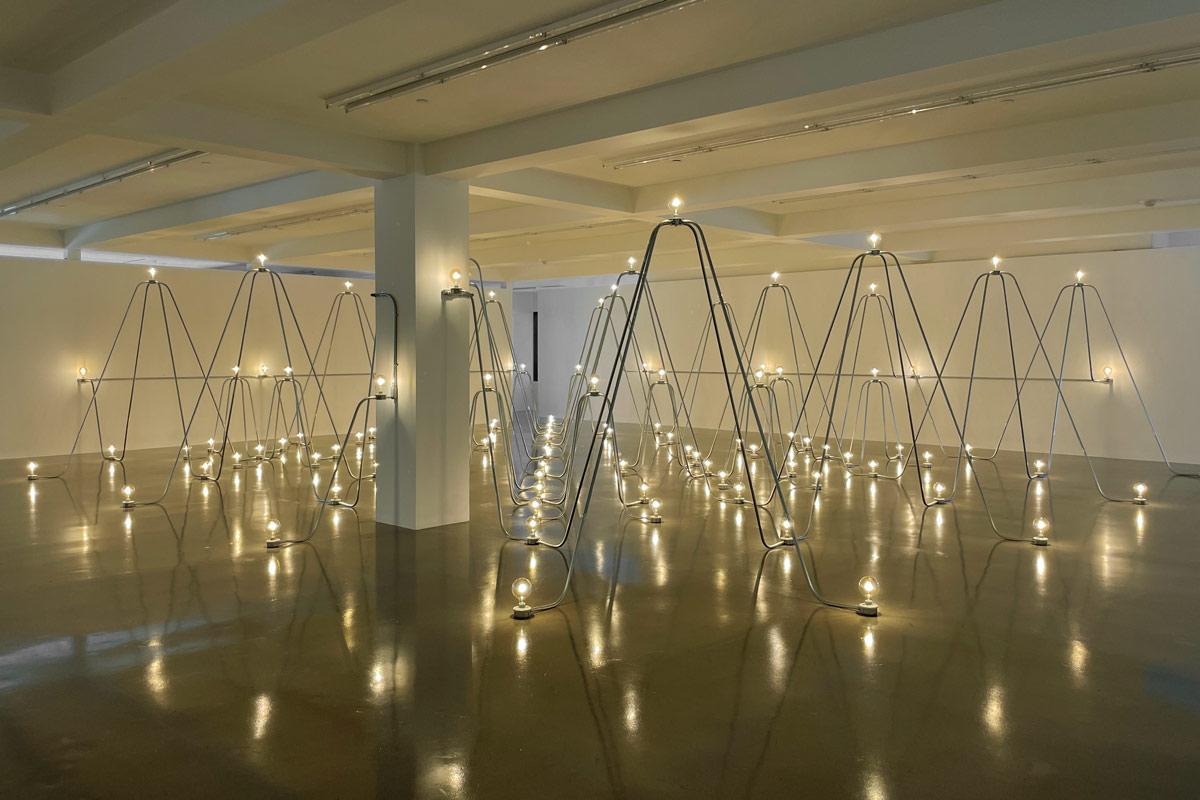Most folks mainly (or only) know Nancy Holt from Sun Tunnels—her 1973-76 land art installation laying large concrete pipes along a certain axis keyed to the seasonal solar arc, thus activating the rural place in which you stand, while igniting a soaring connection with nature’s firmament using nothing but humble materials insightfully aligned to nature’s own contours. But as a new exhibition made in fellowship with the Holt-Smithson Foundation—which manages the legacy of both Holt and her husband, artist Robert Smithson—makes clear, as impressive and enduring as that rather magical work was and is, the true subject her practice was systems of perception.
A pair of sculptural works from 1972 and 1980 respectively, Holt’s Locator works are freestanding welded metal pipes. The top bar opens on both ends and tilts at an angle. Drawn circles on facing walls morph into perfect shape with the viewer’s own small movements. One of them incorporates a cut-out of natural window light and a projected circle, to great effect. These works seem dynamic despite their fixedness due to requiring the viewer’s bodily participation. They further incite observation of miniscule differences across the act of seeing. It’s easy to imagine what happened next—Sun Tunnels, which was basically a phenomenological expansion of these at monumental scale and with the cooperation of nature.
Some of the most compelling works in the thoughtful and rather exhilarating exhibition are photography projects; a medium which she prolifically employed over several decades, working in thematic or concept-based series with the quirky personal flavor of intuitive investigation. For example, the salon grouping of about 20 mainly color photographs, roadside snapshots really, not of the sun—but of the word “sun” as it appeared in street names, diner and motel signs, small business logos, retirement homes and more. California Sun Signs (1972) has a poetry and a wit, a love of puns and a quality of attention with unexpected charm. This same earnest acquisition and off-beat sense of humor very much extends to the expansive Western Graveyards (1968) series of black and white images of old-timey, often decrepit cemetery plots, tombstones and markers across desert towns of the Southwest. Reminiscent of fellow land art guy Walter de Maria’s famous boxes of dirt laid out in fancy gallery spaces, but very much feral out in their natural landscape, these and other works recall similar work being done by better known male artists—her peers—at the same time or even subsequently. It feels good to see this erasure being corrected, for the benefit of art history.
In the upstairs gallery, a dreamy Edisonian wonderland awaits, where a rolling landscape of electrical conduits and vintage-style lightbulbs undulates like waves, or like gentle hills or playground jungle gyms, making visible and tangible the usually hidden network of electricity that runs behind every architectural space we inhabit. In its delicate flickering glow there is delight, in its strangeness a certain mystery. In humble materials, gentle forms, and an invitation to a bit of play, Holt is once again delivering her message—using the medium of light—to slow down, pay closer attention to what’s in front of your eyes and to what’s behind them, to the mathematics of nature, the structure of the world, and to your place within it.


